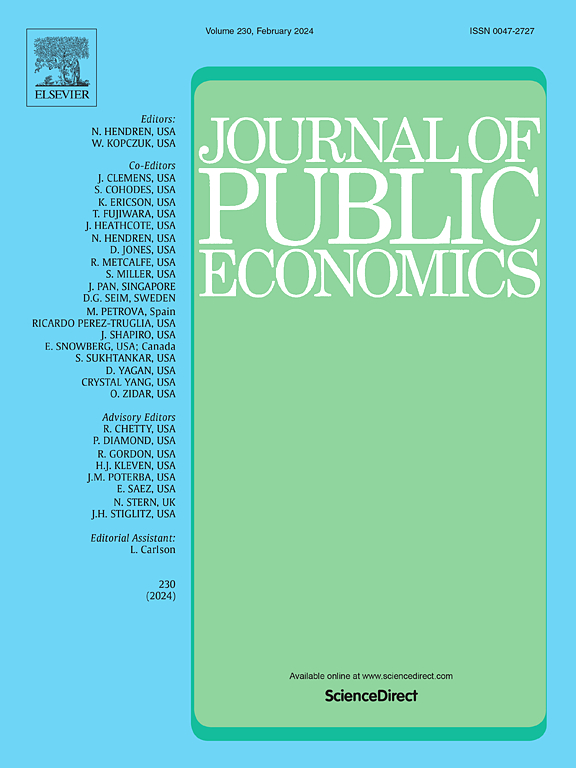异质性支出乘数的部门起源
IF 3.4
1区 经济学
Q1 ECONOMICS
引用次数: 0
摘要
总支出乘数在很大程度上取决于政府采购的部门来源。为了确定这一结果,我们分析了在可处理的生产网络经济中,总产出对特定部门政府支出冲击的反应,显示了它如何映射到受冲击部门的各种特征。当政府支出来自对私人最终需求贡献相对较小、加价低、劳动强度高的部门,以及位于供应链下游的部门时,这种反应更大。我们确认了这些预测,并在美国经济的校准多部门模型中评估了它们的定量相关性,该模型嵌入了部门异质性的几个维度。利用这一模型,我们说明了美国各级政府部门采购构成的差异如何导致支出乘数的巨大变化。后者的范围从联邦国防支出的0.47到州和地方支出的0.82不等,前者相对集中在上游资本密集型制造业,后者主要面向下游劳动密集型服务业。最后,我们利用美国各州军费开支部门构成的异质性,为我们的理论预测提供实证证据。本文章由计算机程序翻译,如有差异,请以英文原文为准。
The sectoral origins of heterogeneous spending multipliers
The aggregate spending multiplier crucially depends on the sectoral origin of government purchases. To establish this result, we characterize analytically the response of aggregate output to sector-specific government spending shocks in a tractable production-network economy, showing how it maps into various characteristics of the shocked sector. The response is larger when government spending originates in sectors with a relatively small contribution to private final demand, low markup, high labor intensity, and in those located downstream in the supply chain. We confirm these predictions and evaluate their quantitative relevance within a calibrated multi-sector model of the U.S. economy that embeds several dimensions of sectoral heterogeneity. Leveraging this model, we illustrate how differences in the sectoral composition of purchases across U.S. government levels lead to large variation in the spending multiplier. The latter ranges from 0.47 for federal defense spending, which is relatively concentrated in upstream capital-intensive manufacturing, to 0.82 for state and local spending, which is mainly oriented towards downstream labor-intensive services. Finally, we exploit heterogeneity in the sectoral composition of military spending across U.S. states to provide empirical evidence supporting our theoretical predictions.
求助全文
通过发布文献求助,成功后即可免费获取论文全文。
去求助
来源期刊

Journal of Public Economics
ECONOMICS-
CiteScore
14.10
自引率
2.00%
发文量
139
审稿时长
70 days
期刊介绍:
The Journal of Public Economics aims to promote original scientific research in the field of public economics, focusing on the utilization of contemporary economic theory and quantitative analysis methodologies. It serves as a platform for the international scholarly community to engage in discussions on public policy matters.
 求助内容:
求助内容: 应助结果提醒方式:
应助结果提醒方式:


